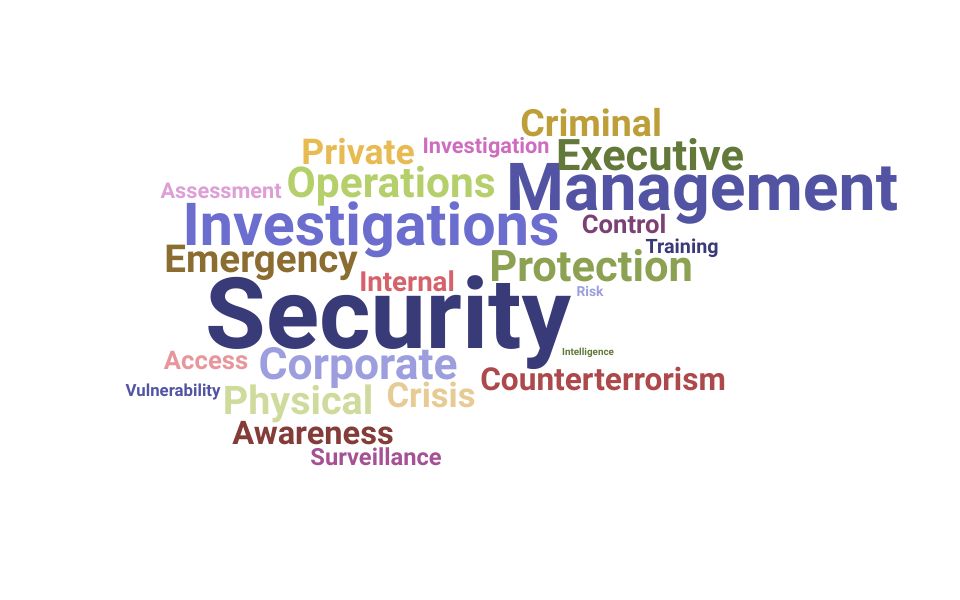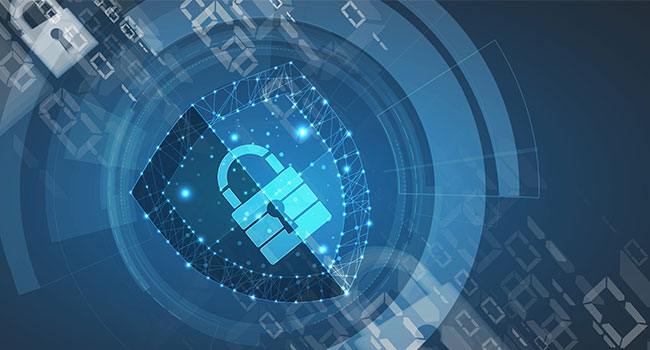From Cybersecurity to Physical Measures: Reinforcing Company Safety in a Changing Globe
In today's quickly developing electronic landscape, the significance of company safety can not be overstated. As cyber hazards end up being widespread and progressively innovative, organizations must go past traditional cybersecurity procedures to secure their assets and procedures - corporate security. This is where the assimilation of physical safety procedures becomes crucial. By combining the staminas of both cybersecurity and physical safety, firms can create a comprehensive protection strategy that attends to the varied series of hazards they face. In this discussion, we will discover the changing risk landscape, the requirement to incorporate cybersecurity and physical security, the application of multi-factor verification actions, the importance of staff member recognition and training, and the adjustment of safety and security measures for remote workforces. By analyzing these vital areas, we will certainly gain useful insights right into exactly how organizations can strengthen their corporate safety in an ever-changing globe.
Understanding the Altering Hazard Landscape
The developing nature of the modern globe necessitates an extensive understanding of the altering risk landscape for reliable corporate security. In today's digital and interconnected age, risks to corporate safety have ended up being much more intricate and advanced. As technology breakthroughs and companies come to be progressively dependent on digital infrastructure, the potential for cyberattacks, data violations, and other safety and security violations has dramatically enhanced. It is vital for companies to remain informed and adjust their protection determines to resolve these developing hazards.
One secret aspect of recognizing the altering danger landscape is acknowledging the different kinds of risks that companies deal with. Furthermore, physical hazards such as burglary, vandalism, and corporate espionage continue to be widespread worries for companies.
Surveillance and assessing the risk landscape is necessary in order to recognize prospective risks and vulnerabilities. This involves remaining upgraded on the most up to date cybersecurity trends, evaluating threat knowledge reports, and carrying out routine risk analyses. By recognizing the transforming hazard landscape, companies can proactively execute appropriate security measures to alleviate risks and shield their properties, track record, and stakeholders.
Integrating Cybersecurity and Physical Safety And Security
Incorporating cybersecurity and physical safety is vital for detailed corporate security in today's interconnected and digital landscape. As organizations increasingly depend on technology and interconnected systems, the limits between physical and cyber dangers are ending up being obscured. To successfully secure against these dangers, a holistic technique that combines both cybersecurity and physical security steps is essential.
Cybersecurity focuses on protecting electronic assets, such as data, networks, and systems, from unauthorized gain access to, interruption, and theft. Physical safety, on the various other hand, encompasses procedures to safeguard physical possessions, individuals, and centers from risks and susceptabilities. By incorporating these 2 domain names, organizations can deal with susceptabilities and threats from both digital and physical angles, thereby boosting their total safety and security position.
The combination of these two self-controls permits a more detailed understanding of protection threats and makes it possible for a unified response to incidents. As an example, physical gain access to controls can be improved by integrating them with cybersecurity protocols, such as two-factor verification or biometric identification. Cybersecurity steps can be complemented by physical safety procedures, such as monitoring video cameras, alarm systems, and secure accessibility factors.

Executing Multi-Factor Verification Procedures
As organizations significantly focus on comprehensive safety and security steps, one reliable technique is the implementation of multi-factor authentication steps. Multi-factor verification (MFA) is a safety and security technique that calls for customers to offer several kinds of recognition to access a system or application. This strategy includes an extra layer of security by integrating something the customer knows, such as a password, with something they have, like a finger print or a security token.
By applying MFA, organizations can significantly enhance their safety stance - corporate security. Traditional password-based verification has its constraints, as passwords can be easily compromised or forgotten. MFA alleviates these threats by including an added verification aspect, making it harder for unauthorized individuals to access to delicate info
There are a number of types of multi-factor authentication methods available, including biometric verification, SMS-based confirmation codes, and equipment symbols. Organizations need to evaluate their certain demands and select the most appropriate MFA solution for their needs.
However, the execution of MFA must be very carefully intended and executed. It is crucial to strike an equilibrium in between safety and security and functionality to stop user aggravation Go Here and resistance. Organizations should also consider potential compatibility concerns and offer adequate training and assistance to ensure a smooth change.
Enhancing Employee Understanding and Training
To strengthen corporate safety, organizations have to focus on enhancing employee awareness and training. Several safety breaches take place due to human error or lack of understanding.
Effective employee awareness and training programs ought to cover a large range of topics, consisting of data security, phishing attacks, social design, password hygiene, and physical safety and security procedures. These programs ought to be tailored to the details needs and duties of various staff member functions within the company. Routine training workshops, simulations, and sessions can aid employees establish the needed skills and understanding to determine and react to security risks properly.
Additionally, companies should motivate a society of security understanding and give recurring updates and pointers to maintain workers notified concerning the most up to date risks and reduction methods. This can be done with inner communication channels, such as newsletters, intranet portals, and email campaigns. By cultivating a security-conscious labor force, organizations can substantially lower the chance of protection incidents and secure their important properties from unauthorized access or compromise.

Adapting Safety And Security Procedures for Remote Workforce
Adjusting business safety steps to accommodate a remote workforce is vital in ensuring the protection of delicate info and possessions (corporate security). With the increasing fad of remote work, companies have to implement proper safety and security procedures to mitigate the threats connected with this brand-new method of functioning
One important aspect of adjusting safety and security steps for remote work is establishing secure communication networks. Encrypted messaging platforms and virtual private networks (VPNs) can help shield sensitive info and stop unapproved accessibility. In addition, organizations ought to apply making use of strong passwords and multi-factor authentication to boost the protection of remote access.
Another important consideration is the application of safe and secure remote accessibility remedies. This entails giving staff members with safe and secure access to company sources and data through virtual desktop facilities (VDI), remote desktop computer methods (RDP), or cloud-based solutions. These modern technologies guarantee that delicate details stays secured while making it possible for employees to execute their browse around this web-site duties effectively.

Lastly, thorough safety awareness training is vital for remote staff members. Training sessions must cover finest techniques for safely accessing and taking care of sensitive info, recognizing and reporting phishing efforts, and preserving the general cybersecurity hygiene.
Conclusion
In final thought, as the risk landscape continues to develop, it is essential for companies to enhance their security measures both in the cyber and physical domain names. Incorporating cybersecurity and physical safety and security, carrying out find more info multi-factor verification steps, and boosting worker awareness and training are crucial actions towards attaining robust company safety.
In this discussion, we will discover the transforming danger landscape, the requirement to integrate cybersecurity and physical security, the application of multi-factor authentication procedures, the significance of staff member understanding and training, and the adaptation of safety measures for remote workforces. Cybersecurity actions can be matched by physical protection actions, such as surveillance cams, alarms, and protected accessibility points.
As companies increasingly prioritize thorough safety and security actions, one effective method is the execution of multi-factor verification actions.In verdict, as the threat landscape continues to advance, it is important for companies to strengthen their safety gauges both in the cyber and physical domains. Integrating cybersecurity and physical safety and security, carrying out multi-factor authentication steps, and improving staff member recognition and training are important steps towards accomplishing durable business safety.